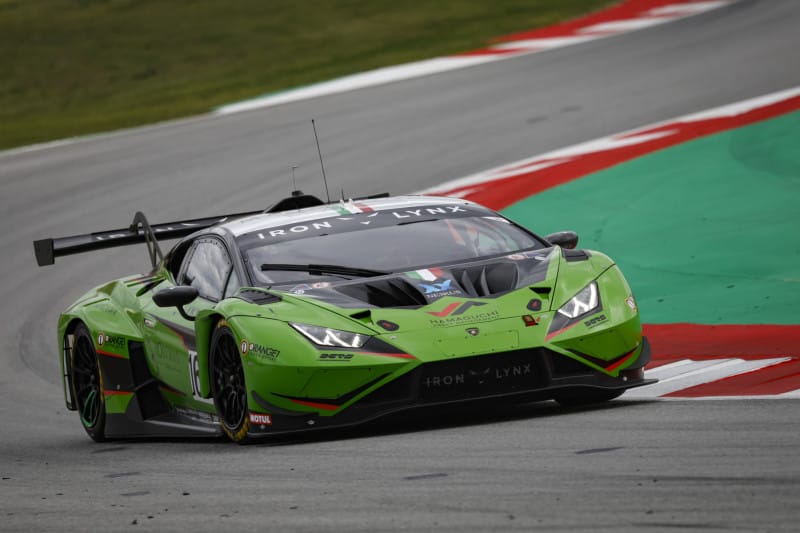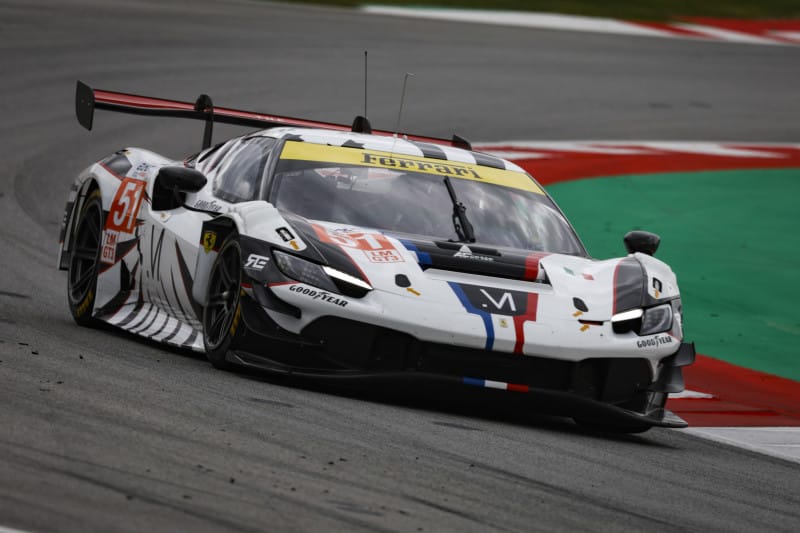When the 4 Hours of Barcelona gets underway on 14th April, Goodyear will be well on its way to its biggest season since it returned to endurance racing in 2020. In 2024, it continues as the exclusive supplier of LMP2 in the European Le Mans Series and at the 24 Hours of Le Mans. In addition, the new LMGT3 category, which has already thrilled in the FIA World Endurance Championship, begins in ELMS.
A total of 22 LMP2 cars (14 LMP2; 8 LMP2 Pro/Am) have entered ELMS this season. They will be joined by 11 LMGT3 cars with manufacturers Aston Martin, Ferrari, Lamborghini and Porsche represented.
Across the 2024 season, ELMS will visit six of the most iconic motorsport venues in Europe, beginning at Circuit de Barcelona-Catalunya for the Prologue and first round, before moving onto the likes of Mugello - a new calendar entrant - Spa-Francorchamps and Portimao.

To explain the similarities and differences between LMP2 and LMGT3, Goodyear’s Endurance Program Manager Mike McGregor provides an overview as to how the two disciplines compare.
Part of the same endurance DNA
If you were to explore the genome of a modern LMP2 and LMGT3 machine, the DNA that powers strategy, efficiency and competition would be an ancestral match. The ties between the two categories are extremely similar when it comes to extracting the most performance.
Extending stints and managing resources is a key component of success. Goodyear has engineered tires to provide relentless performance for around two hours despite the difference in demands.

“We needed to build a tire that would not only fire up quickly, but last two or three stints depending on the circuit,” says McGregor. “The two categories share this factor, and Goodyear Racing has worked to build a stable and consistent platform for the two categories.”
The variety of driver skill is another element that LMGT3 and LMP2 share. Goodyear has developed a tire that can also work across the full spectrum of FIA Driver Categorisation which covers Bronze-rated amateur drivers up to seasoned Platinum professional drivers.
A key characteristic of the tire is its short warm up phase. This helps amateur drivers find the limit of the car quickly and confidently. What’s more, the tire’s performance remains consistent across a stint with minimal drop in performance, helping drivers get into a comfortable rhythm while completing a stint.
Differences that go beyond skin-deep
Downforce, power and weight remain the key differences between LMGT3 and LMP2 machines. An LMP2 car generates roughly 50% more downforce compared to an LMGT3. Higher downforce for LMP2 means that they have much better cornering performance, particularly at high speed, and have overall sharper handling.

For this season, LMP2 cars will have 580bhp (up from 540bhp in 2023) delivered by the same 4.2 Litre V8 GK428 Gibson engine. Weight is also reduced from 950kg to 930kg, and larger fuel tanks (from 69 litres to 75 litres) will be permitted. These changes are estimated to be worth around 1 second per lap.
Weight is another key difference, with LMP2 cars coming in at 950 kilograms and LMGT3 significantly heavier, typically between 1,200 and 1,300 kilograms.
For tire designers at Goodyear, the biggest difference is how each category works the tires through the corners.
“LMGT3 cars have greater pitch and roll than LMP2,” McGregor explains. “The amount of damping force going through the tire means what we demand from the tire is completely different. The downforce created by LMP2 cars means they are less susceptible to body roll and are usually set up stiffer so the downforce can act more consistently.

“LMP2 chassis are built to a pure race car specification which gives us a more consistent platform to develop a bespoke tire. With LMGT3, we have a brand new tire concept to ensure it works well with everybody.
“You have to consider all the different types of cars in GT racing. We have front-, mid- and rear-engined cars so the weight distribution is very different. Goodyear Racing’s design team has done an incredible job of ensuring that a single tire specification works well with every car.”
LMGT3: The road car connection that goes beyond the shell
The allure of GT racing is partly due to the similarities between the cars competing and their road-going counterparts. Not only is this great for fans, but it also lowers the overall cost of an LMGT3 entry compared to the previous generation LMGTE.

“For us, endurance racing is about showcasing Goodyear’s technology; with LMGT3, it’s the closest thing you can get to a road car,” adds McGregor. “The cars use many of the same components and the regulations limit the degree that teams and manufacturers can make modifications.
“The new Goodyear Racing tires are developed to go as long and as fast as possible. If you look at the end consumer for road cars like the Porsche 911 GT3 RS, this tire is exactly suited to that type of category. So not only does participation demonstrate Goodyear’s commitment to international endurance racing, it also helps us develop technologies for the future that ultimately benefit the end user.”
Goodyear Racing EMEA Media Contacts:
James Bailey
james.bailey@pitbox91.com
+44 790 4114 414
Jake Kilshaw
jake.kilshaw@pitbox91.com
+44 7736 551999
Jordan Harvey
jordan.harvey@pitbox91.com
+44 7443 520649
ARTICLE SPONSORED BY Rally Store EU







